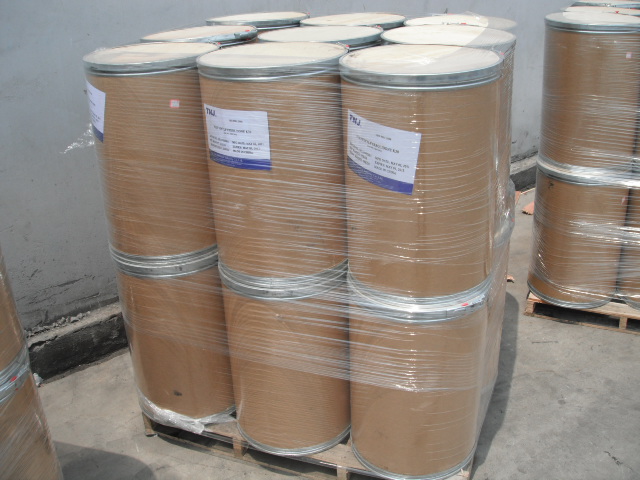Good quality Diflubenzuron//35367-38-5 manufacturer
Min.Order / FOB Price:Get Latest Price
| 1 Kilogram |
Negotiable |
- Min.Order :1 Kilogram
- Purity: 99%
- Payment Terms : L/C,T/T,
Keywords
Diflubenzuron 35367-38-5 Diflubenzuron//35367-38-5
Quick Details
- Appearance:white loose powder
- Application:1) Diflubenzuron is an insect growth regulator, disrupting the formation of the insect cuticle by chitin synthesis inhibition, therefore the application time is at insect moulting, or hatching of eggs
- PackAge:25kg/drum
- ProductionCapacity:2000|Metric Ton|Month
- Storage:Keep in cool and dry warehouse
- Transportation:CIF/FOB by sea or by air
Superiority:
Diflubenzuron Manufacturer Cas 35367-38-5 Agrochemical Insecticide Competitive price
Certificate of Analysis
| Testing Item | Specification | Result |
| Appearance | white loose powder | white loose powder |
| Content,% | ≥25.0 | 25.2 |
| PH Value | 5.0-9.0 | 7.5 |
| Moisture,% | ≤2.0 | 1.6 |
|
Suspensibility,% |
≥80.0 | 93.3 |
| Wetting time,S | ≤120 | 58 |
| Fineness,% | ≥ 98.0 | 99.2 |
| Conclusion | Qualified |
|
Details:
Diflubenzuron Manufacturer Cas 35367-38-5 Agrochemical Insecticide Competitive price
Certificate of Analysis
| Testing Item | Specification | Result |
| Appearance | white loose powder | white loose powder |
| Content,% | ≥25.0 | 25.2 |
| PH Value | 5.0-9.0 | 7.5 |
| Moisture,% | ≤2.0 | 1.6 |
|
Suspensibility,% |
≥80.0 | 93.3 |
| Wetting time,S | ≤120 | 58 |
| Fineness,% | ≥ 98.0 | 99.2 |
| Conclusion | Qualified |
|
Introduction:
Diflubenzuron is a benzoylphenyl urea used on forest and field crops to selectively control insects and parasites. Principal target insect species are the gypsy moth, forest tent caterpiller, several evergreen eating moths, and the boll weevil. It is also used as a larvae control chemical in mushroom operations and animal houses. Diflubenzuron is a stomach and contact poison. It acts by inhibiting the production of chitin, a compound that makes the outer covering of the insect hard and thus interferes with the formation of the insect's cuticle or shell. It is available as a suspension concentrate, wettable powder, or in granules.
Applications:
1) Diflubenzuron is an insect growth regulator, disrupting the formation of the insect cuticle by chitin synthesis inhibition, therefore the application time is at insect moulting, or hatching of eggs.
2) It is used against a wide range of major pests including mosquitos, grasshoppers and migratory locusts. Due to its selectivity and rapid degradation in soil and water, diflubenzuron has no or little effect on the natural enemies of various harmful insect species.
3) The properties make it suitable for inclusion in integrated control programmes. It can also be used widely as animal health care medicament in Australia and New Zealand.
4) It can be control of a wide range of leaf-eating insects in forestry, woody ornamentals and fruit. Controls certain major pests in cotton, soya beans, citrus, tea, vegetables and mushrooms. Also controls larvae of flies, mosquitoes, grasshoppers and migratory locusts.
5) It also used as an ectoparasiticide on sheep for control of lice, fleas and blowfly larvae. Due to its selectivity and rapid degradation in soil and water, it has no or only a slight effect on the natural enemies of various harmful insect species. These properties make it suitable for inclusion in integrated control programmes.

You Might Also Like
-
2'-Methoxyacetophenone CAS 579-74-8
CAS NO:579-74-8
-
8-hydroxyquinoline, copper(ii) salt CAS 10380-28-6
CAS NO:10380-28-6
-
denatonium benzoate CAS 3734-33-6
CAS NO:3734-33-6
-
Dimethyl di(hydrogenated tallow) ammonium chloride CAS 61789-80-8
CAS NO:61789-80-8
-
1,2-Phthalic dicarboxaldehyde CAS 643-79-8
CAS NO:643-79-8
-
STEARALKONIUM HECTORITE CAS 12691-60-0
CAS NO:12691-60-0
Related Searches
About|Contact|Cas|Product Name|Molecular|Country|Encyclopedia
Message|New Cas|MSDS|Service|Advertisement|CAS DataBase|Article Data|Manufacturers | Chemical Catalog
©2008 LookChem.com,License: ICP
NO.:Zhejiang16009103
complaints:service@lookchem.com Desktop View